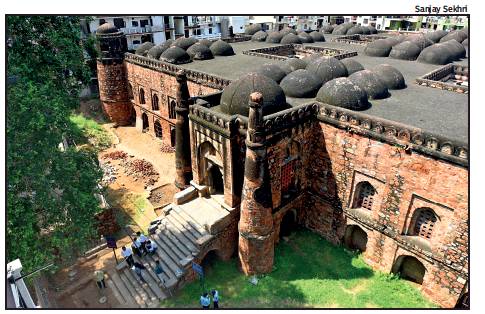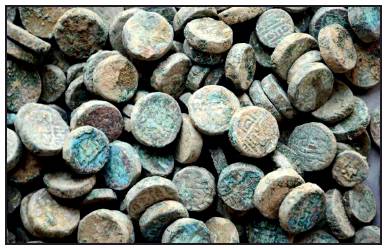Delhi: Khirki or Khirkee
This is a collection of articles archived for the excellence of their content. |
Contents |
Khirki Masjid
Not a Rana Pratap fort: ASI, 2018
Khirki Masjid no Rana Pratap fort, says ASI, November 10, 2018: The Times of India

From: Khirki Masjid no Rana Pratap fort, says ASI, November 10, 2018: The Times of India
Archaeological Survey of India has finally responded to claims by an unknown group of people that the 13th-century Khirki Masjid at Saket is actually a fort of Rajput warrior Maharana Pratap. It has assured the Delhi Minorities Commission (DMC) in writing and verbally that the monument is safe and is under protection since 1915.
A few months ago, unknown miscreants had struck off the word ‘masjid’ from the ASI signage at the monument. Then a group of people claiming to be Khirki Masjid area locals had approached DMC, claiming that it was the Rajput king’s fort. “As far as we know, there is nothing in recorded history about the masjid ever being a fort of Maharana Pratap. We asked ASI to refute these claims and issue a clarification to end the matter once and for all. If such things are repeated over time, it can lead to unnecessary controversy,” said DMC chairman Zafarul Islam Khan.
The ASI superintendent of Delhi zone deposed before DMC and said the agency was fully aware of the historical importance of the mosque. He also said the mosque’s name has been written again on the signboard, additional security provided and a stone plaque would be installed at the entrance soon.
ASI has also started repairing the mosque. “ASI said there is nothing in their records to support the claims about the mosque and if something comes to ASI officially, they will issue a statement,” Khan added.
ASI also answered a question about prayers not being allowed in the mosque and said Khirki Masjid was not a living monument when it was taken over. If prayers were being offered in a mosque when ASI took over, the same continues under the ASI Act.
A senior ASI official told TOI: “Khirki Masjid is a 13th-century, Tughlaq-era mosque and there is absolutely no question about raising any doubts about it. No one has approached us or written to us with any claim that the masjid was a fort. There is nothing in history to ever indicate any such thing-—no documentation, archives, research, books, scientific evidence, nothing. For us, it’s an non-issue.”
Khirki Masjid was constructed by Malik Maqbool who was the prime minister of Sultan Feroze Shah Tughlaq. There is no inscription at the mosque to indicate it history, but the Gazetteer of India 1915 mentioned it as Khirki Masjid.
Trove of mediæval coins

From: Richi Verma, ASI stumbles upon medieval coin hoard at Khirki mosque, September 12, 2018: The Times of India
Little bits from India’s medieval past in the form of a hoard of 254 coins have been discovered by the ASI during ongoing conservation work at south Delhi’s 14th-century Khirki Masjid.
Archaeologists feel the coins may date to the reign of the Pashtun founder of the Suri dynasty, Sher Shah Suri, in the 16th century CE, or earlier.
The hoard was discovered near the entrance stairs and the site has been cordoned off till the Archaeological Survey of India investigates.
Sources said the coins were in a clay pot. “The coins have inscriptions on both sides but it is unclear whether it is Persian or Arabic and what they mean. In olden times, coins rarely had the same shape or weight and these coins are also in varied shapes and weights. Their value is still to be determined,” an ASI official said. The official added, “The hoard of 254 coins of the mediaeval period was found during clearance work on Monday. A study to decipher the coins is being initiated. A team led by K R K Reddy, deputy SA from the circle office; Deepak Panwar, CA; and Mr Rawat, JCA, Hauz Khas sub-circle ensured safe custody of the hoard.”
B
Richi Verma, 254 coins out, ASI to dig deep at Khirki Masjid, September 13, 2018: The Times of India

From: Richi Verma, 254 coins out, ASI to dig deep at Khirki Masjid, September 13, 2018: The Times of India
The discovery of 254 medieval coins in the Khirki Masjid on Monday has left the Archaeological Survey of India greedy for more. The 14th century mosque, where a routine conservation job was being undertaken at the time of the finding, has now turned into a site for detailed scientific exploration and ASI will dig down two feet all around the monument in the hope of new revelations. In order to maximise the effort, ASI will use a station survey around the mosque to pinpoint areas for exploration where the ground level is detected to be uneven or higher than usual.
The coins and the clay pot in which they were found on Monday are in ASI’s custody. “The coins will be chemically cleaned, and then studied by the epigraphy department to learn more about them and ascertain exactly which period they date from,” said N K Pathak, superintending archaeologist (Delhi circle), ASI.
A few of the coins were scrutinised by the science branch of ASI, and it has been confirmed that they belong to the era of Sher Shah Suri and his successors.
This is the second time that ASI has found medievalera coins at Khirki Masjid. In 2003, 63 coins were discovered there, but ASI is not clear about the exact location where they were found. The newly discovered coins will be compared with the ones found 15 years earlier to see whether they are identical. “The clay pot can also help us learn more about the coins and how old they are,” said one official. “It was already damaged at the time of the discovery, but we have preserved the fragments.”
The coins are made of copper with a small percentage of silver. Other than that, ASI hopes to get more information after the engravings on the coins are deciphered by the epigraphy department. A decision will then be taken on whether the coins will be displayed for the public and if so, where. The process is expected to take at least a few months.
In the meanwhile, ASI is turning its focus on clearing the muck around Khirki Masjid. “This has to be done very carefully because if we lower the ground level too much, it could lead to drainage issues,” said an official. “We do know how low the original ground level of Khirki Masjid was but we suspect that at least two more steps of the masjid stairs are currently below that level.”
This work will take at least three months and will be done under the supervision of ASI. There is much enthusiasm for the project. As Pathak said, “The coins we found have high archaeological value. It is rare for such a large number of coins to be discovered at an ancient monument, and we are hoping to find more such treasures.”